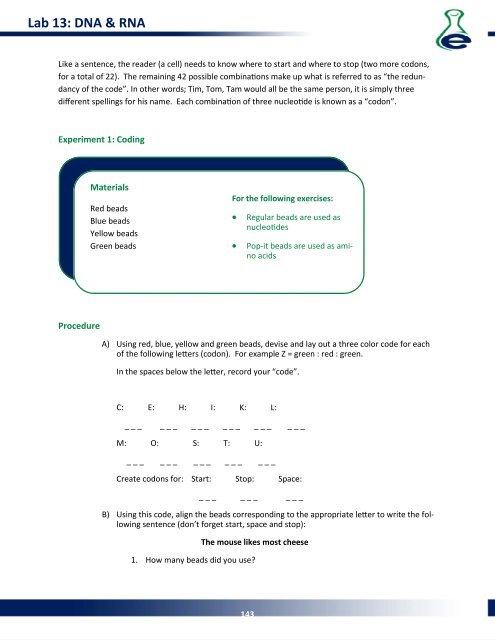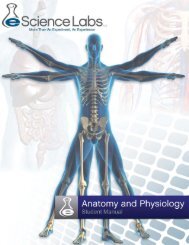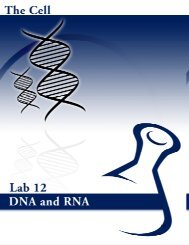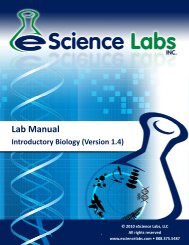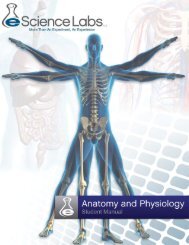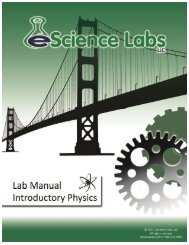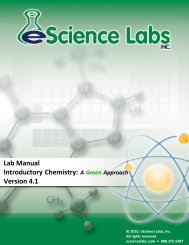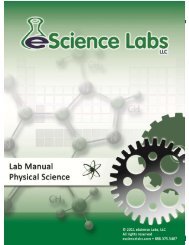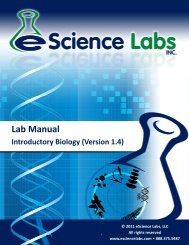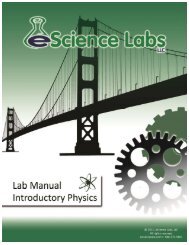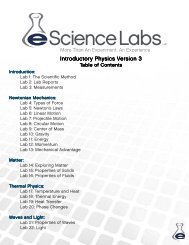Lab Manual - eScience Labs
Lab Manual - eScience Labs
Lab Manual - eScience Labs
You also want an ePaper? Increase the reach of your titles
YUMPU automatically turns print PDFs into web optimized ePapers that Google loves.
<strong>Lab</strong> 13: DNA & RNA<br />
Like a sentence, the reader (a cell) needs to know where to start and where to stop (two more codons,<br />
for a total of 22). The remaining 42 possible combinaons make up what is referred to as “the redundancy<br />
of the code”. In other words; Tim, Tom, Tam would all be the same person, it is simply three<br />
different spellings for his name. Each combinaon of three nucleode is known as a “codon”.<br />
Experiment 1: Coding<br />
Materials<br />
Red beads<br />
Blue beads<br />
Yellow beads<br />
Green beads<br />
For the following exercises:<br />
• Regular beads are used as<br />
nucleodes<br />
• Pop-it beads are used as amino<br />
acids<br />
Procedure<br />
A) Using red, blue, yellow and green beads, devise and lay out a three color code for each<br />
of the following leers (codon). For example Z = green : red : green.<br />
In the spaces below the leer, record your “code”.<br />
C: E: H: I: K: L:<br />
_ _ _ _ _ _ _ _ _ _ _ _ _ _ _ _ _ _<br />
M: O: S: T: U:<br />
_ _ _ _ _ _ _ _ _ _ _ _ _ _ _<br />
Create codons for: Start: Stop: Space:<br />
_ _ _ _ _ _ _ _ _<br />
B) Using this code, align the beads corresponding to the appropriate leer to write the following<br />
sentence (don’t forget start, space and stop):<br />
The mouse likes most cheese<br />
1. How many beads did you use?<br />
143


